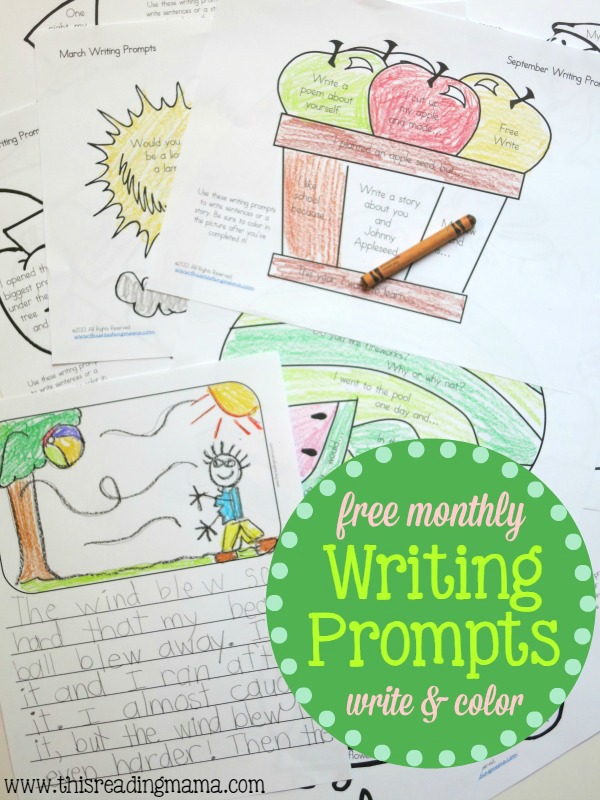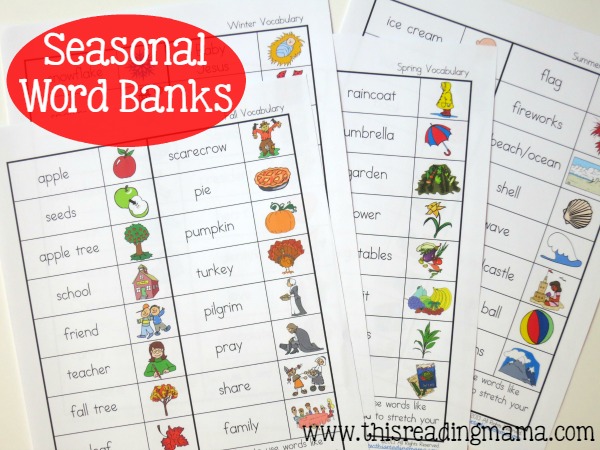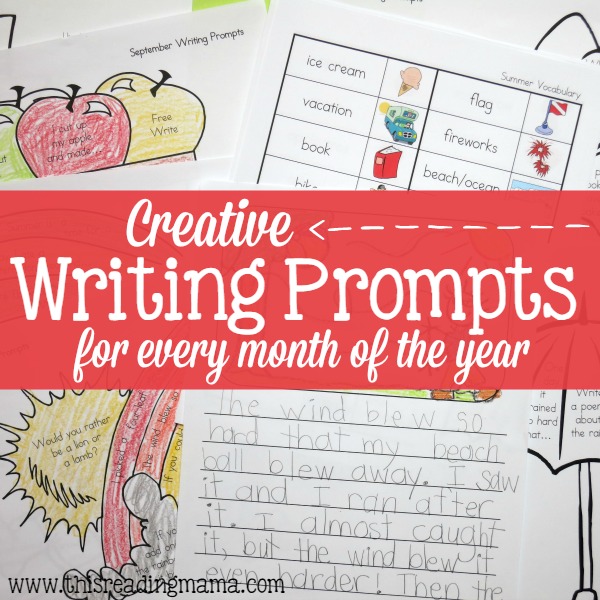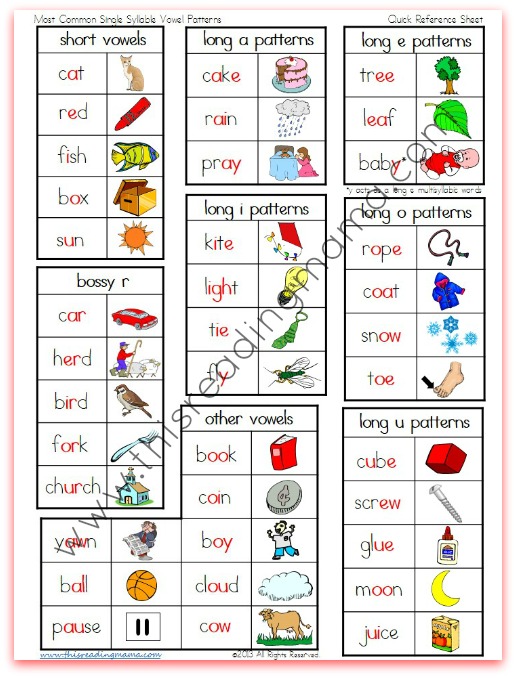If you’re looking for a few free writing prompts, these creative writing prompts can be fun for kids because they get to color in the picture as they go! Below, you’ll find links for all 12 FREE monthly writing prompts. Each prompt page contains eight writing prompts with seasonal themes {seven pre-chosen prompts and one “free write”}. After kids finish writing, they can begin coloring in the picture.

*This post contains affiliate links.
These write and color prompts were designed for K, 1st, and even some 2nd grade writers, but younger or older kids may enjoy using them, too. I have also found that these prompts work particularly well with special needs kids, kids who struggle to pick a topic for writing, or kids who desire a little more structure during writing time.
Purchase the Write & Color Bundle Pack
$3.00Add to cart
4 Tips for Using Writing Prompts
1. Writing prompts do not take the place of learning the craft of writing {see more about this below}. These prompts have been used mostly as independent work in our home, like morning work, not as a replacement for teaching the writing process.
2. Writing prompts can be flexible. For example, if the prompt reads, “Thanksgiving looks like…” and the child wants to change the prompt and write what Thanksgiving smells like, I almost always let the child do that. There are occasional times that I want all my kids to stick with the same prompt and I’m more rigid, but the purpose of writing prompts in our home is to spark creativity and writing, not to put kids in a writing box.
3. Help kids expand their writing by teaching them a simple word like because at a young age. In my classroom, I placed it up on the board by the 2nd or 3rd week of school in Kindergarten. This helps kids stretch out their “I love my mom” sentence to “I love my mom because…” And is another word that kids can use to stretch their writing, although it can be a little trickier due to run on sentences. A simple question such as,”What happened next?” is another effective way to help kids stretch and expand their writing.
4. Spelling matters, but first kids need to get their thoughts on paper. If you’re managing many students or giving your child time to just write without your assistance, you probably know that you’re going to see some invented spellings {misspellings}.
While I have my methods for dealing with invented spellings, such as providing spelling charts, word banks {like those found in the bundle pack} and other tools while they are writing, you need to decide ahead of time what yours will be so that you can help your kids grow as spellers. I have an entire chapter dedicated to understanding and dealing with invented spelling in my book, Teaching Kids to Spell.
FREE Monthly Writing Prompts
Each free monthly prompt page is listed separately below, but you can purchase the bundle pack for these writing prompts, which includes all 12 pages plus

these seasonal word banks and blank writing paper. You can read more about the bundle pack here.
- August Writing Prompts – beach, summer’s end, summer memories
- September Writing Prompts – about me, apples, new school year
- October Writing Prompts – leaves, scarecrows, fall
- November Writing Prompts – turkeys, Thanksgiving, giving thanks
- December Writing Prompts – presents, Christmas, cookies
- January Writing Prompts – snow, winter, snowmen
- February Writing Prompts – heart, love, candy, presidents
- March Writing Prompts – wind, kites, rainbows
- April Writing Prompts – rain, seeds, spring
- May Writing Prompts – flowers, garden
- June Writing Prompts – hot weather, bugs, ice cream
- July Writing Prompts – watermelon, fireworks, flags
Not Just Writing Prompts
While writing prompts can be a part of writing instruction, but they should not be used as a complete writing program/curriculum. Here are a few links to some of my favorite ideas for teaching writing as a craft:
1. Preschool & Kindergarten Writing Lessons {a 10-week writing series for the young child}
2. Simple Writing Lessons for Primary Grades {a 12-week writing series based on the Writer’s Workshop method}
3. Unleashing the Writer in Your Child {a 5-day series}
4. How to Get Kids to HATE Writing {a review of WriteShop, my favorite writing curricula}
5. Organizing a Writer’s Notebook for Kids {The Notebooking Fairy}
Follow This Reading Mama’s board Writing Ideas for Kids on Pinterest.

~Becky


The compromise I make with invented spelling is that I do not write over my students’ work. Instead I tell them that not everyone can read First Grade, so we’ll make it “look how it’d look, if you saw it in a book!”. I type up their work correctly spelled and punctuated, print, and staple to the bottom of their page.
Good advice.
Thank you.
Pam